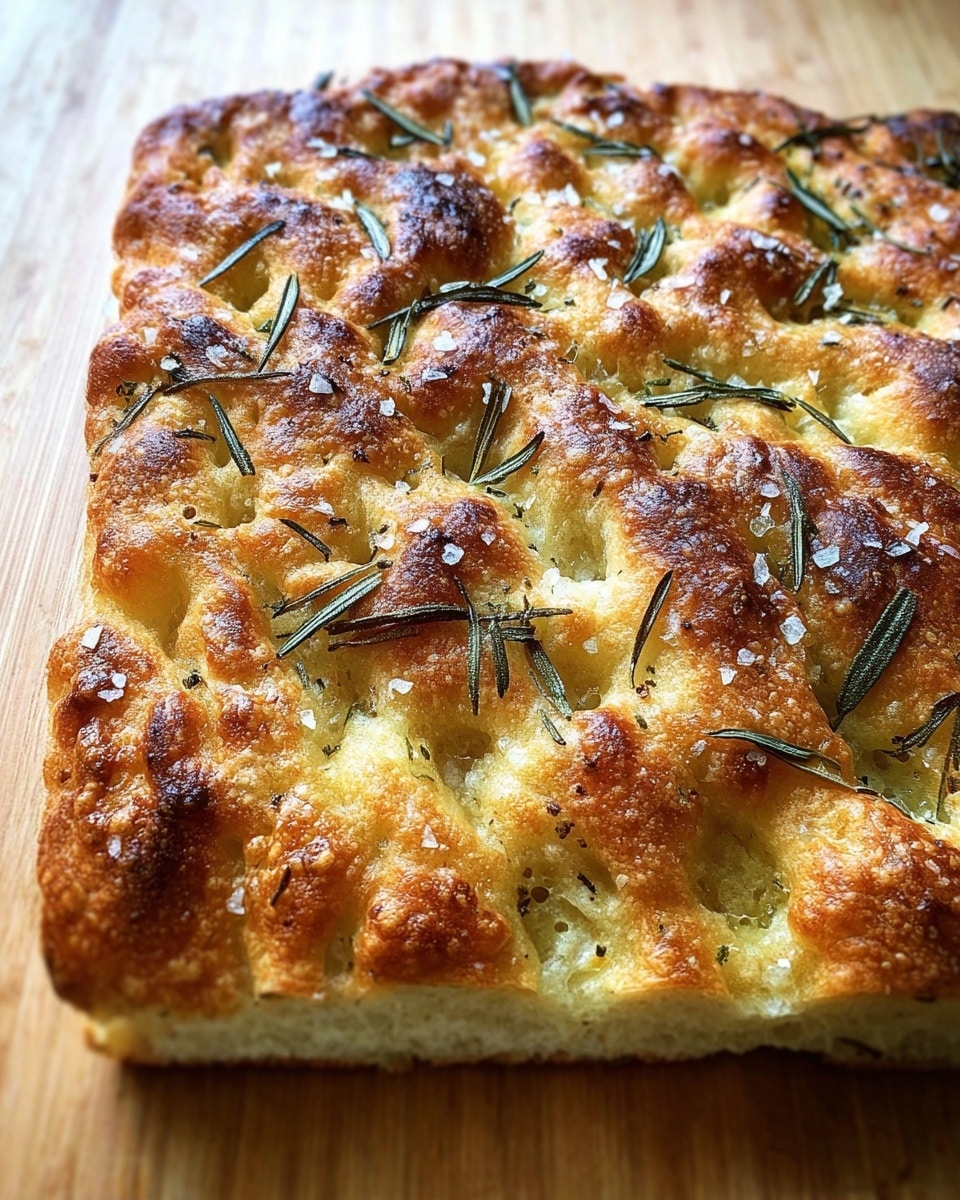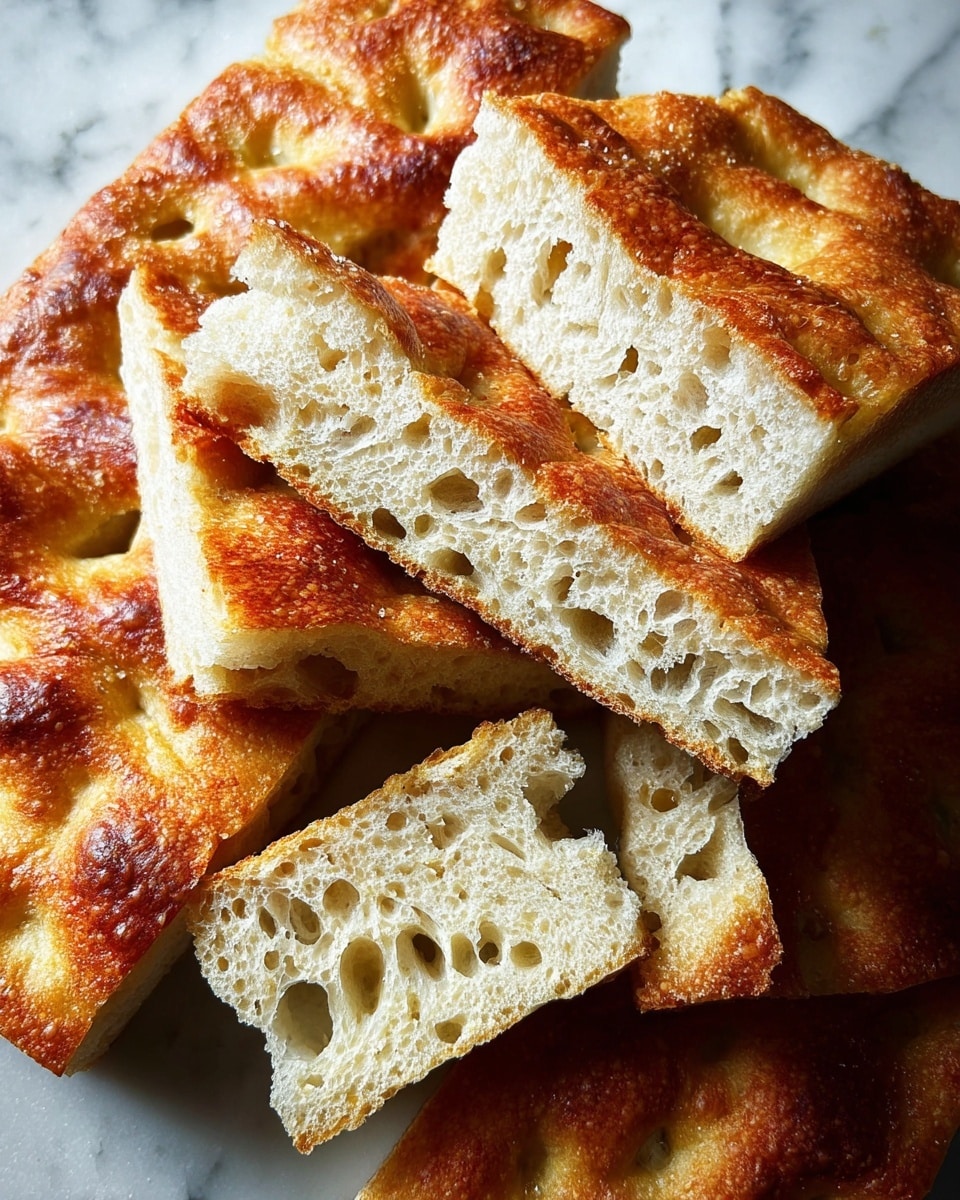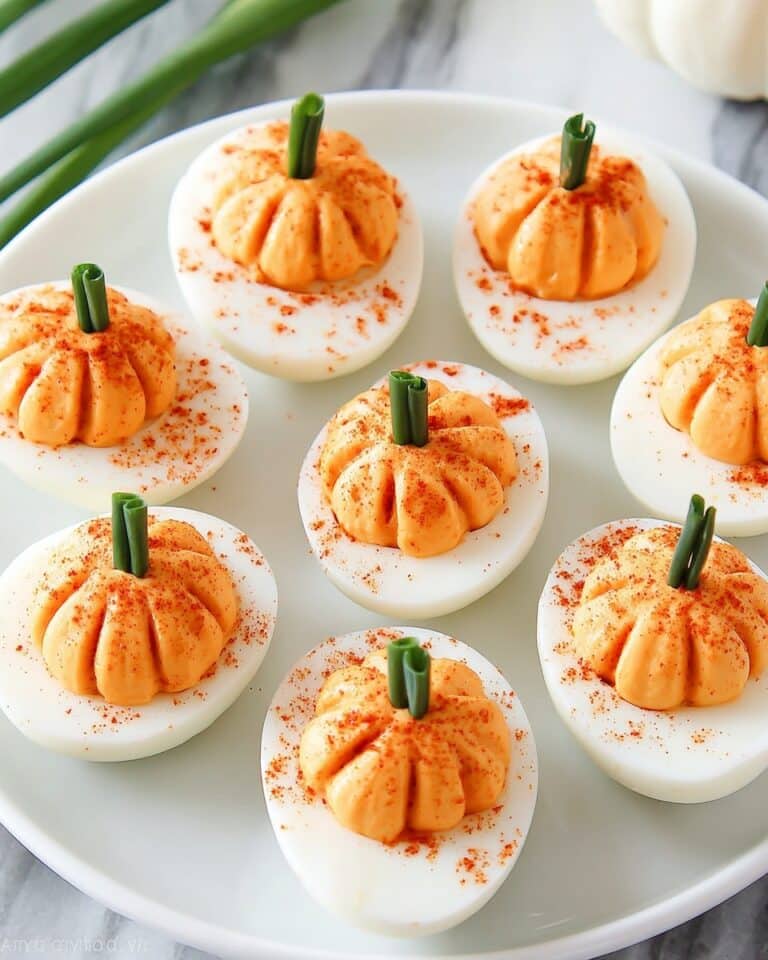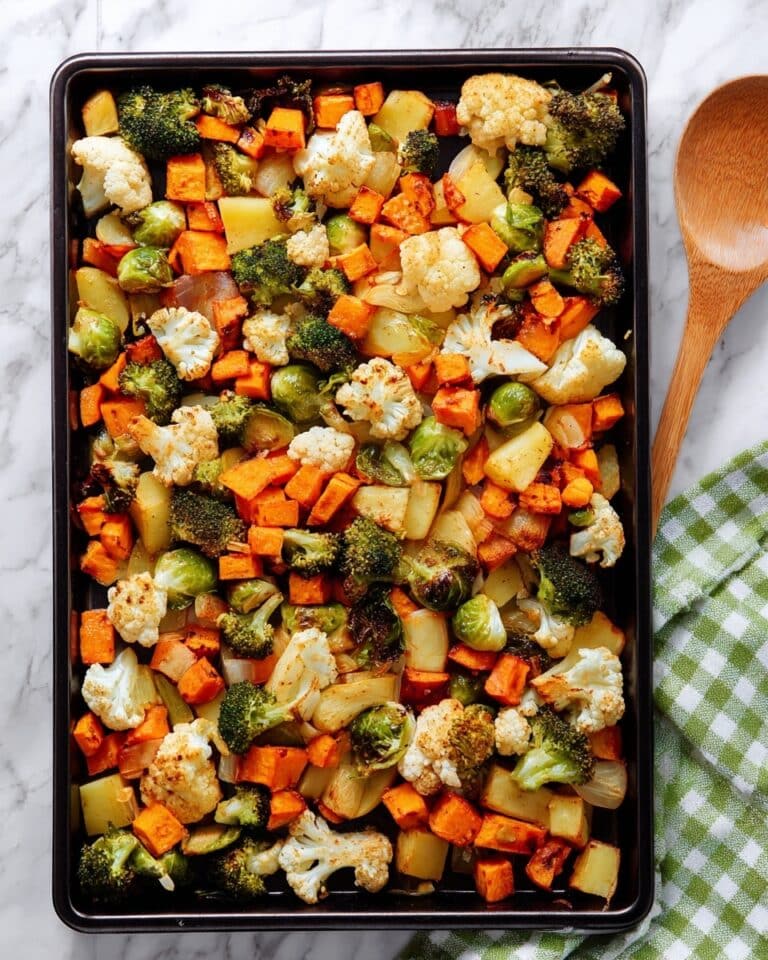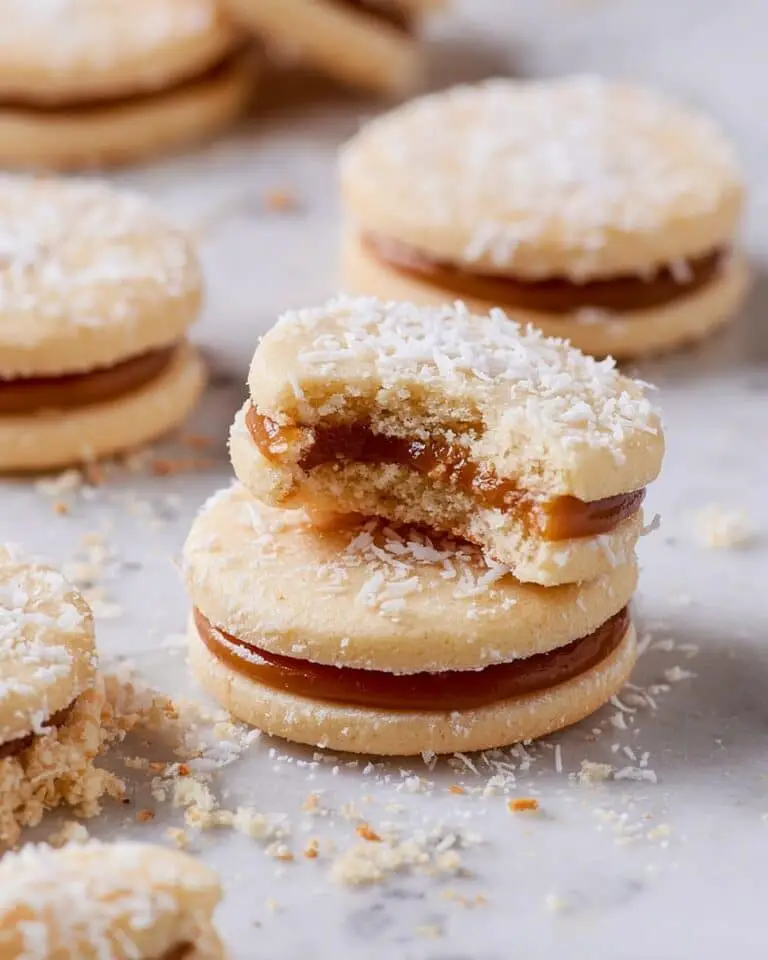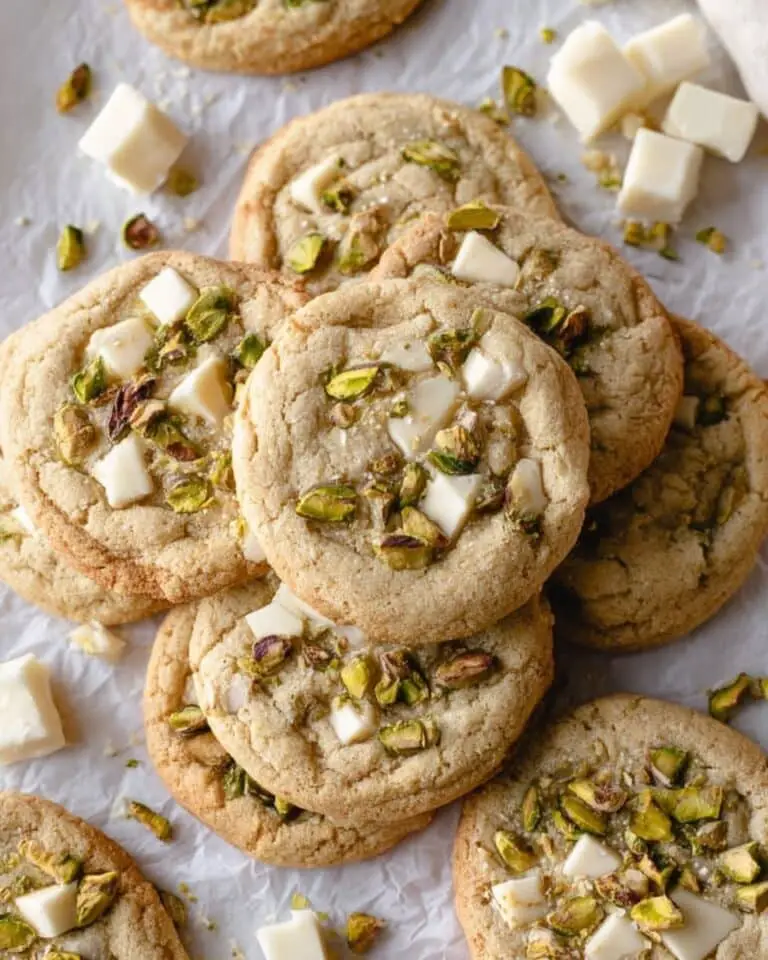Oh, I just have to share with you The Best, Easiest Focaccia Bread Recipe that I stumbled upon—and honestly, it’s been a game changer in my kitchen. This focaccia is so delightfully simple to make, yet it comes out with that perfect golden crust and pillowy interior every single time. Whether you’re baking for friends, weeknight dinners, or brunch, this recipe is a sure crowd-pleaser.
What I find especially wonderful is how hands-off this bread is. You do a bit of stirring, let the dough chill overnight (which I love because it fits perfectly into my busy schedule), and then just a few hours of resting and baking later—you’ve got warm, fragrant focaccia that’s better than anything store-bought. Trust me, once you try this, you’ll want to make it all the time!
Why You’ll Love This Recipe
- Effortless Preparation: The dough only needs a quick mix and a slow overnight rise, making it perfect for busy days.
- Delicious Flavor & Texture: Crisp outside, soft and airy inside, with layers of fragrant olive oil and flaky salt.
- Flexible Ingredients: Simple pantry staples come together to create something special—no fancy flours needed.
- Great for Any Occasion: Whether for sandwiches, dipping, or just snacking, this focaccia fits the bill.
Ingredients You’ll Need
The magic of The Best, Easiest Focaccia Bread Recipe lies in its straightforward, no-fuss ingredients that work harmoniously. When shopping, aim for high-quality olive oil and sea salt, as those truly elevate the final bread.
- All-purpose or bread flour: I like bread flour for a bit more chew, but all-purpose works beautifully too.
- Kosher salt: Choose kosher salt for even seasoning; table salt can be too harsh here.
- Instant yeast: This is my go-to because there’s no need to proof it beforehand—but if you use active dry yeast, just check my adjustment notes.
- Lukewarm water: Combining hot and cold water gives you the perfect warmth to help activate the yeast gently.
- Butter: I use this for greasing pans to prevent sticking and add subtle richness.
- Olive oil: The star fat that gives focaccia its signature flavor and golden crust.
- Flaky sea salt: Maldon salt is my favorite for that delightful crunch on top.
- Rosemary leaves (optional): Fresh or dried, they add a lovely herbal aroma that’s hard to resist.
Variations
One of the things I enjoy most about this focaccia recipe is how easy it is to make your own. Depending on the season or your mood, I love playing around with toppings and add-ins—there’s really no wrong way to personalize it!
- Herbs & Spices: I often swap rosemary for thyme or oregano, and sometimes sprinkle crushed red pepper flakes for a spicy kick.
- Olives or Sun-dried Tomatoes: Adding diced olives or sun-dried tomatoes on top before baking brings an extra burst of flavor that my family adores.
- Cheese Toppings: Occasionally, I add grated Parmesan or crumbled feta to add a savory twist—just remember to reduce salt slightly when you do.
- Gluten-Free Option: While I haven’t tried a full gluten-free version myself, substituting gluten-free bread flour blends could work if you experiment with the hydration.
How to Make The Best, Easiest Focaccia Bread Recipe
Step 1: Whisk and Mix Your Dough
Start by whisking your flour, kosher salt, and instant yeast together in a large bowl—this spreads everything evenly and prevents clumps. Pour in the lukewarm water, then use a rubber spatula to mix until you get a sticky, shaggy dough ball. Don’t worry if it looks messy; it’s supposed to! I like to rub the dough’s surface lightly with olive oil here—that little step helps keep the dough from drying out during its chill in the fridge. Cover your bowl tightly, either with plastic or a well-secured damp tea towel, and pop it in the fridge for at least 12 hours or up to three days.
Step 2: Prepare Your Pan and Portion the Dough
Before your dough is ready to come out, line two 8- or 9-inch pie plates or a 9×13-inch pan with parchment paper, or grease well with butter or cooking spray. This is crucial because focaccia is notorious for sticking if skipped! Pour a tablespoon or two of olive oil into each pan—this oil bath helps create that luscious crust. Deflate your dough gently using two forks—this technique is my favorite because it allows me to shape the dough without losing all its lovely, airy bubbles. Split your dough into two equal parts if using smaller pans, roll each in the oil to coat, then place into the pans. Let those dough balls rest uncovered for 3 to 4 hours at room temp. You can skip covering here, which always feels like such a treat in my kitchen!
Step 3: Dimple, Top, and Bake Your Focaccia
When your dough has nearly doubled in size and is soft and jiggly, preheat your oven to 425°F and place your rack in the middle. Now for my favorite part: drizzle a tablespoon of olive oil over each focaccia, rub your fingers in oil, and start pressing straight down to create those signature dimples. Don’t be shy—press firmly! If you notice any tight spots, gently stretch the dough to fill the pan—this is what makes every slice beautifully fluffy. Then, sprinkle flaky sea salt and if you’d like, rosemary leaves across the top. Pop your pans into the oven, bake for 25 to 30 minutes until the bottoms are golden and the crust looks irresistibly crisp. A quick tip: the underside color tells you when it’s just right.
Step 4: Cool and Enjoy (Or Store!)
Once baked, transfer your focaccia to a cooling rack and give it at least 10 minutes before slicing—this rest keeps the soft interior intact. Planning to make sandwiches? Let it cool completely before cutting in half. If you have leftovers (which is rare in my house!), store them in an airtight container at room temperature for up to 3 days, or freeze for up to three months. Reheating brings back that fresh-baked magic, simply bake at 350°F for 15 minutes.
Pro Tips for Making The Best, Easiest Focaccia Bread Recipe
- Oil Your Dough Well: I learned the hard way—if you don’t slick the dough enough before refrigerating, it can dry out or form a crust. Olive oil acts like a moisture seal.
- Use a Damp Towel or Plastic Wrap Carefully: If covering with a towel, secure it with a rubber band to create an airtight seal and keep your dough happy.
- Dimpling is Key: Press with all your fingers, deep into the dough; this traps air bubbles and creates that irresistible texture.
- Don’t Rush the Rise: The slow, cold ferment is what develops flavor and texture—skipping this will result in a less tasty focaccia.
How to Serve The Best, Easiest Focaccia Bread Recipe
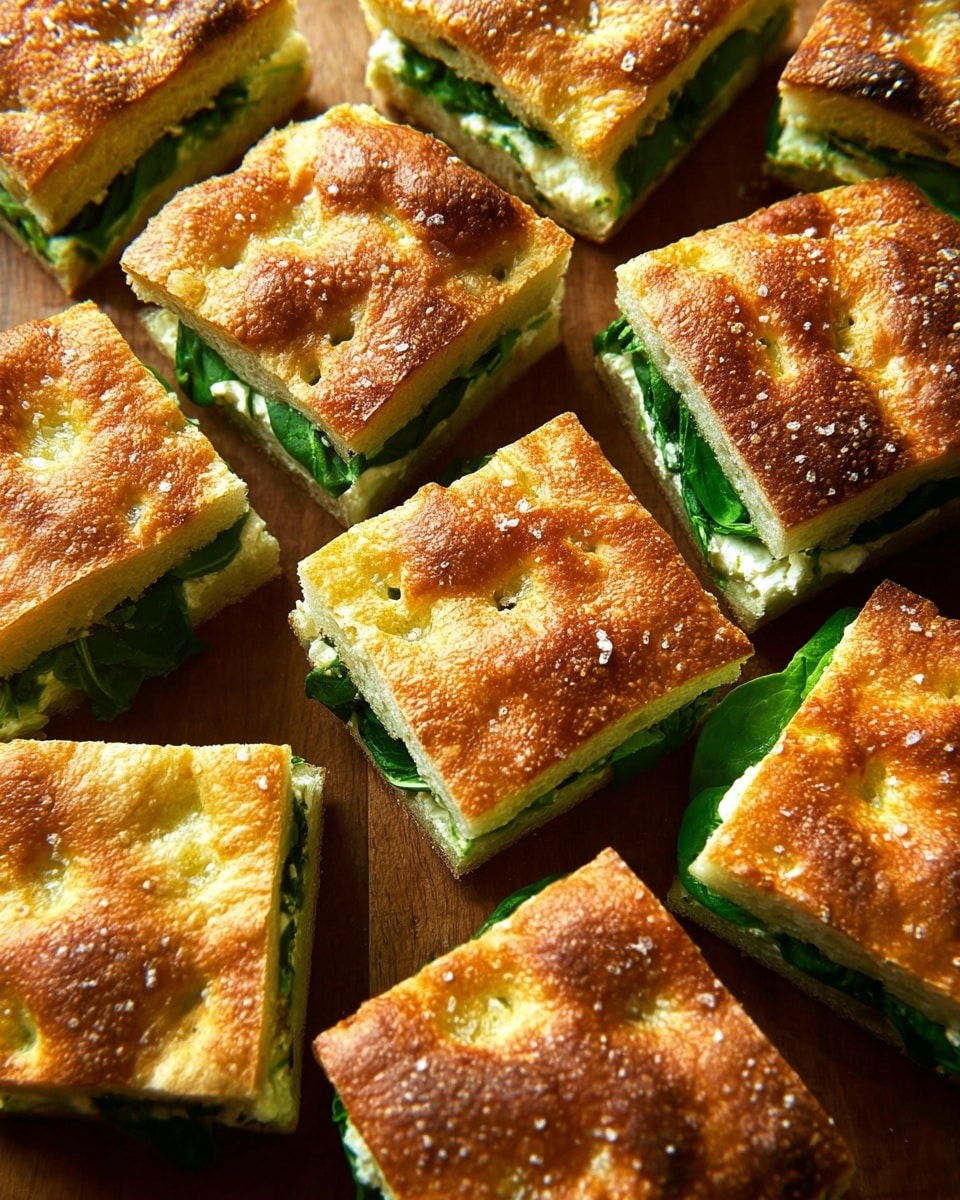
Garnishes
I love topping mine with flaky sea salt and fresh rosemary every time because it brings that rustic, fragrant touch that makes the bread sing. Sometimes, I throw on thinly sliced garlic or even a sprinkle of parmesan just before baking for an extra savory punch. These garnishes not only look beautiful but really amp up the flavor.
Side Dishes
Focaccia pairs like a dream with salads, soups, and pasta dishes. When I serve it alongside a hearty tomato soup or a crisp arugula salad with lemon vinaigrette, my family goes crazy for this combo. It’s also lovely simply dipped in balsamic vinegar and olive oil for a quick snack.
Creative Ways to Present
For special occasions, I’ve shaped focaccia into fun shapes—like braiding the dough or making a focaccia “pizza” topped with colorful vegetables and herbs. Another trick I love is cutting it into small squares to serve alongside a cheese and charcuterie board, which always impresses guests!
Make Ahead and Storage
Storing Leftovers
Once your focaccia is completely cool, I recommend wrapping it in a clean towel and placing it in an airtight container or bag. It’ll stay fresh at room temperature for up to three days. I usually find it disappears quicker, but if you have leftovers, this method keeps the texture intact.
Freezing
Freezing is a fantastic option when you’ve baked a big batch. I like to slice the focaccia first, wrap each piece tightly in plastic wrap, then foil, and freeze in a sealed bag. When I want some, I just pull out a slice and reheat it directly from frozen—so convenient!
Reheating
To bring back that freshly baked quality, I preheat the oven to 350ºF and warm slices for about 15 minutes. This revives the crust and softens the crumb perfectly. Microwaving can make it chewy, so the oven method is definitely worth it!
FAQs
-
Can I use active dry yeast instead of instant yeast in this recipe?
Yes, you can! If using active dry yeast, I recommend blooming it first by dissolving it in a portion of the lukewarm water with a pinch of sugar and letting it sit for about 5-10 minutes until frothy. Then, add it to your flour mixture instead of mixing it directly in dry. This extra step ensures your yeast is active and helps your focaccia rise perfectly.
-
What happens if I skip the overnight refrigeration?
Skipping the slow rise means less flavor development and a different texture. The dough will still rise quickly at room temperature, but you’ll lose that nuanced, slightly tangy taste and the focaccia might be less airy. If you’re short on time, let it rise in a warm spot for about 2 hours and then proceed, but for truly The Best, Easiest Focaccia Bread Recipe, I recommend the cold ferment.
-
Can I add other toppings besides rosemary?
Absolutely! Feel free to experiment with toppings like olives, cherry tomatoes, caramelized onions, or different herbs like thyme and oregano. Just scatter them over the dough right before baking for fantastic flavor variations that keep this recipe exciting every time you make it.
-
How do I know when the focaccia is fully baked?
The focaccia should be golden brown on top and have a crispy crust underneath. I usually lift the pan carefully and check the bottom—it should have a nice golden color and feel firm to the touch. Sometimes giving it a gentle tap sounds hollow is another good sign your bread is done.
Final Thoughts
I absolutely love how The Best, Easiest Focaccia Bread Recipe takes just a little planning but rewards you with beautiful bread that feels homemade and delicious every single time. It’s become my go-to for everything from casual dinners to celebratory meals, and I’m confident you’ll find it’s a keeper in your kitchen too. Try it next time you want a simple yet impressive bread—it’ll quickly become one of your favorites, just like it did for me.
Print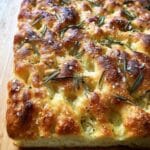
The Best, Easiest Focaccia Bread Recipe
- Prep Time: 20 minutes
- Cook Time: 25 to 30 minutes
- Total Time: 18 hours 30 minutes
- Yield: 2 loaves
- Category: Bread
- Method: Baking
- Cuisine: Italian
Description
This focaccia bread recipe is the best and easiest way to achieve a golden, crispy, and flavorful Italian flatbread with a soft interior. Made with simple ingredients like flour, yeast, salt, water, and olive oil, the dough undergoes a long, cold fermentation to develop a rich flavor and perfect texture. Dimples are pressed into the dough and topped with olive oil, flaky sea salt, and optional rosemary before baking to golden perfection. Perfect as a snack, sandwich base, or side to your favorite dishes.
Ingredients
Dough Ingredients
- 4 cups (512 g) all-purpose flour or bread flour
- 2 to 3 teaspoons (10 to 15 g) kosher salt
- 2 teaspoons (8 g) instant yeast
- 2 cups (455 g) lukewarm water (made by combining 1/2 cup boiling water with 1 1/2 cups cold water)
For the Pan and Topping
- Butter for greasing pans
- 4 tablespoons olive oil, divided
- Flaky sea salt, such as Maldon, for sprinkling
- 1 to 2 teaspoons whole rosemary leaves (optional)
Instructions
- Mix the dough: In a large bowl, whisk together the flour, kosher salt, and instant yeast. Add the lukewarm water. Using a rubber spatula, mix until all the liquid is absorbed and the ingredients form a sticky dough ball. Lightly rub the surface of the dough with olive oil to prevent drying.
- Refrigerate the dough: Cover the bowl tightly with a damp tea towel, cloth cover, or plastic wrap. Place in the refrigerator immediately for at least 12 hours and up to three days. This long, cold fermentation helps develop flavor and texture. Ensure enough olive oil coats the dough especially if using a cloth cover to avoid skin forming on top.
- Prepare pans: Line two 8- or 9-inch pie plates or one 9×13-inch pan with parchment paper or grease well with butter or nonstick spray to prevent sticking. Pour 1 tablespoon olive oil into the center of each pie plate or 2 tablespoons in the larger pan.
- Divide and shape the dough: Using two forks, gently deflate the dough by pulling it away from the bowl sides and rotating in quarter turns, turning it into a rough ball. Split the dough into two equal pieces if using two smaller pans; otherwise keep whole for the larger pan.
- Coat with oil and rest: Place each dough piece in its pan, rolling gently in the olive oil to coat it completely. Let the dough rest at room temperature for 3 to 4 hours until risen. There is no need to cover during this second rise.
- Preheat oven and add toppings: Preheat your oven to 425°F (218°C) and place a rack in the middle. Optionally sprinkle rosemary evenly over the top of the dough. Drizzle each dough piece with the remaining olive oil (1 tablespoon per smaller pan or 2 tablespoons for larger pan). Gently press all your fingers down straight into the dough to create deep dimples, stretching gently as needed to fill the pan.
- Sprinkle sea salt: Evenly sprinkle flaky sea salt all over the top of the dough to enhance flavor and texture.
- Bake the focaccia: Place the pans in the oven and bake for 25 to 30 minutes until the underside is golden and crisp. Remove from oven and transfer the bread to a cooling rack.
- Cool and serve: Let focaccia cool for at least 10 minutes before cutting and serving. For sandwiches, cool completely before slicing in half horizontally.
- Store the focaccia: Once completely cooled, store focaccia in an airtight container or bag at room temperature for up to 3 days, or freeze for up to 3 months. Reheat before serving at 350°F (177°C) for about 15 minutes to revive the crust.
Notes
- Use either all-purpose or bread flour depending on availability and preference; bread flour will yield a chewier texture.
- If you must skip the long refrigerator fermentation, allow the dough to rise at room temperature for 2 to 3 hours but the flavor and texture won’t be as developed.
- Greasing pans with butter is recommended especially for glass or certain pans to prevent sticking.
- Olive oil coating on dough before refrigeration prevents drying and crust formation.
- Flaky sea salt and rosemary are optional but add wonderful flavor and texture.
- Baking time and temperature are key for a crispy outside and tender inside focaccia.
Nutrition
- Serving Size: 1 slice (1/12th of a loaf)
- Calories: 200
- Sugar: 0.5 g
- Sodium: 400 mg
- Fat: 7 g
- Saturated Fat: 1 g
- Unsaturated Fat: 5.5 g
- Trans Fat: 0 g
- Carbohydrates: 30 g
- Fiber: 2 g
- Protein: 6 g
- Cholesterol: 0 mg

